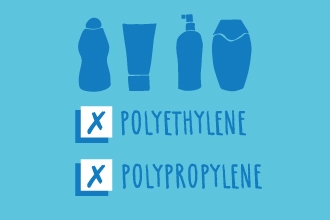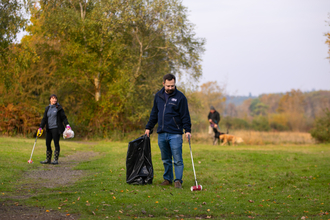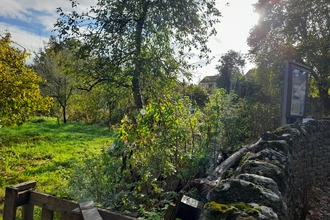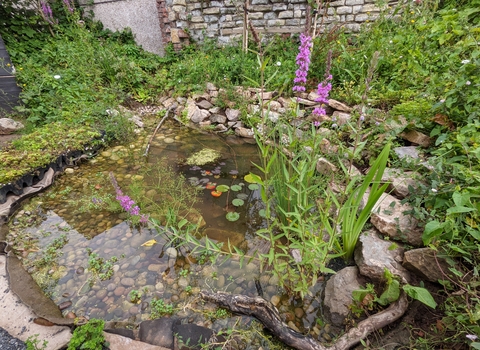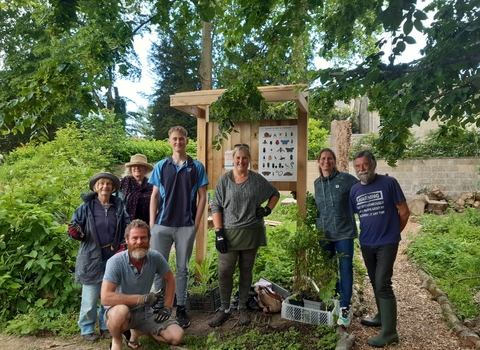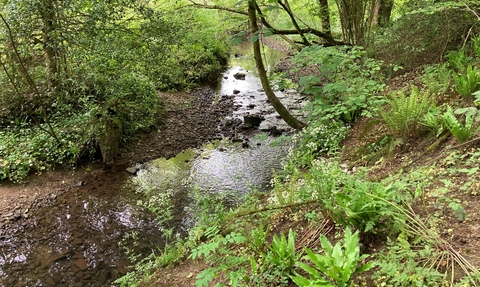
Trout in the Trym
Trout in the Trym community group
Taking river health into their own hands
Trout in the Trym are a north Bristol community group of dedicated volunteers who actively improve the ecology of the river Trym. SusWoT is one of ten groups that make up Trout in the Trym. Eight sections of the Trym have linked together with other groups, encompassing the mouth of the Trym and Sea Mills, Coombe Dingle, Blaise Castle Estate, Henbury, Westbury on Trym, Badock’s Wood and Southmead Trym Valley. They have cleared over 160 tonnes of rubbish to date!
SusWoT is also involved in promoting Air Source Heat Pumps in Westbury, working with the Government, Bristol City Council, the Centre for Sustainable Energy in Bristol and the Bristol Energy Network.
Trout in the Trym is part of SusWoT Sustainable Westbury on Trym
SusWoT is a group of people coming together to give their time and knowledge, to improve their communities. They focus on activities to improve the local area through litter picking, energy efficiency and growing food.
At an event organized by BACP, Trout in the Trym shared some key lessons learned from running their group
People care – having something that volunteers can do themselves, which makes a tangible difference is popular. Their volunteers are thanked and appreciated.
A little leadership and vision goes a long way – by using the varied skills of the group, a lot can be achieved, such as planning work, communications (email, website, social media, local events and press), contacting stakeholders.
Contacting stakeholders is more effective when they are approached constructively, reasonably and collectively (as a group rather than individually).
“Get them on your side, build up a track record of reporting issues, use published data to make a case, explain the local vision. An angry rant gets no results!” Trout in the Trym.
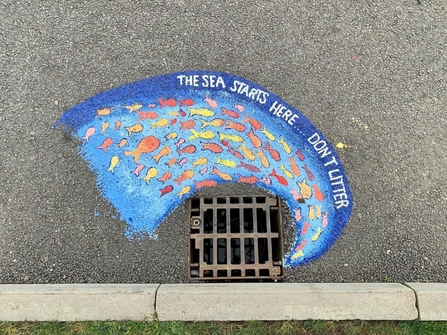
Trout in the Trym
Advice for other groups wanting to take action for the water environment
Understand the challenges facing your local water body:
- Find on-line published data: Rivers Trust (sewage – CSOs); Water quality (nutrients – BART Riverblitz); Riverfly monitoring, river levels (EA); Local wildlife recording scheme (BAP Priority species, etc)
- Issues include water – quality and pollution sources, litter - sources and amount of (eg abstraction), habitat – including weirs, dredged areas and also community behaviour that affects the water.
Maintain a simple high level vision.
Manage and communicate
- Have an up to date email list, website & active Facebook page. Identify who in our group has what skills. Tell people how things are going. Contact local publications, press, radio.
- Identify key stakeholders – engage them as constructively as possible, consider what they may be interested in, keep trying! Progress can be made & surprises occur.
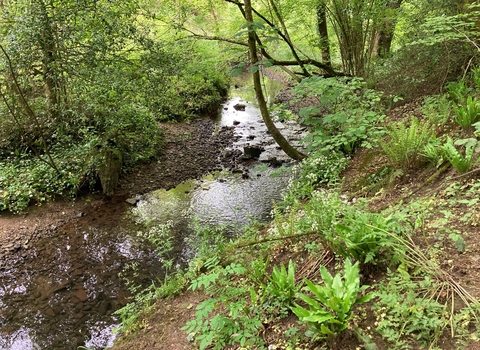
Trout in the Trym
Actions taken for nature along the river
- Litter picking
- Himalayan balsam pulling
- River cleaning
- Wildlife surveying
- Community events and education
- Water quality reporting
- Educating
- River channel management
Litter picking
Regular litter picks are organized by SusWoT in a variety of locations and over 160 tonnes of litter has been collected! This not only improves wildlife habitat but also welcomes community pride and reduces the chances of litter being dropped in the area. Some areas are repeatedly worked on and still hold a great amount of rubbish. Lockdown restrictions originally gave a lot of local people motivation to litter pick.
SusWoT has about 30 active river cleaners and balsam bashers. There are 60 or so members of SusWoT who litter pick the streets of Westbury and probably another 30 in Henleaze.
ADVICE: The group have a good relationship with Bristol Parks, who take away the rubbish. They are part of the team together.
They hold litter picks at the same day and time each week. This makes it easier for people to attend.
Most areas have almost been cleared of litter, which has improved the neighbourhood. Litter is still dropped - but the historic litter is almost gone and new litter is on top and not buried.
River cleaning
“Great care is taken to ensure that activities are safe. Activities are cancelled if there are fewer than four adults involved or the weather or river conditions are too poor.” Trout in the Trym.
There is a plan to systematically work their way along the river, clearing litter and improving habitat spaces via regular work parties. Volunteers interested are told where to meet and some are very experienced. New people come along to volunteer sometimes miss litter, but this no problem and expected.
Equipment used: litter pickers, shades and trugs to put rubbish in as they float.
ADVICE: A fixed day and time is important. The weekly cycle worked better for the group than monthly. They also recommend being on time - starting and finishing when they say they will to help manage expectations. Of course chat is always welcome as the social side is important.

Trout in the Trym
Trout in the Trym are investigating some weirs along the river, that may be blocking eel/fish migration along the river and could be harming the rivers ecology. "Weirs also interrupt the natural transport of river sediment". Adding eel or fish passes or notching may be possible, with less visual impact but still worthwhile environmental benefits.
Learn more more about weirs from Trout in the Trym.
Himalayan Balsam
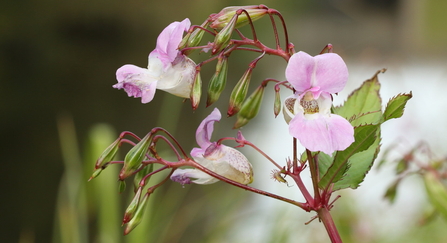
Vaughn Matthews
Himalayan Balsam is a non-native, invasive plant that spreads very easily, especially in shaded area near water. It presents a big problem for many areas near streams, as the structure of the soil is altered and increases erosion in the winter. It suppresses native wildflowers.
Trout in the Trym have a good plan for eradicating Himalayan Balsam.
Wildlife highlights
Trout in the Trym
Wildlife surveying is a great way to raise awareness of what wildlife is in the area and sharing sightings increases interest and chances of protecting local habitat spaces. Surveying can also be called a bioblitz or citizen science. It can be done as a group on individually. Apps like inaturalist make surveying accessible, fun and easy for people to get involved with – the app makes suggested species identifications and uses the data for national records.
Trout in the Trym have created some useful leaflets about local wildlife in the area. Giving baseline data about what effects their work is having in the area.
Water quality
Trout in the Trym and SusWoT are very active in championing sustainable ways of living, including the effect of this on their local waterways. All actions make a difference.
Monitoring the quality of the water provides a great way to know what difference they are making to the area through their actions. One of the organisers, is interested in water quality and monitors this. His report is very useful: water quality report.
The group are very organised about who to contact at Wessex Water and the Environmental Agency, in regards to sewage, pollution and general water quality. Their website cleverly shows specific webpages and phone numbers. Trout in the Trym are good at educating others to make a difference and not just moan.
Involving and educating the local community
Peter Colman-Smith, with help from Jon Ogborne and Roger Moses created this very impressive Trout in the Trym leaflet to show what is happening in the area. A big action for nature is to share what you see, the more people that notice wildlife, the more likely they are to protect it. The leaflet highlights which fish, aquatic bugs, birds and mammals to keep an eye out for and where to see them.
The leaflet also includes what people can do to take action themselves through sustainable living practices, shown below.
Trout in the Trym
Resources

(C) Hannah Bunn
Be part of Team Wilder
All actions for nature collectively add up and creates life for people and wildlife.
Share your actions for nature, like Tom by sharing and tagging @avonwt on social media and
Log your actions for nature on the map















